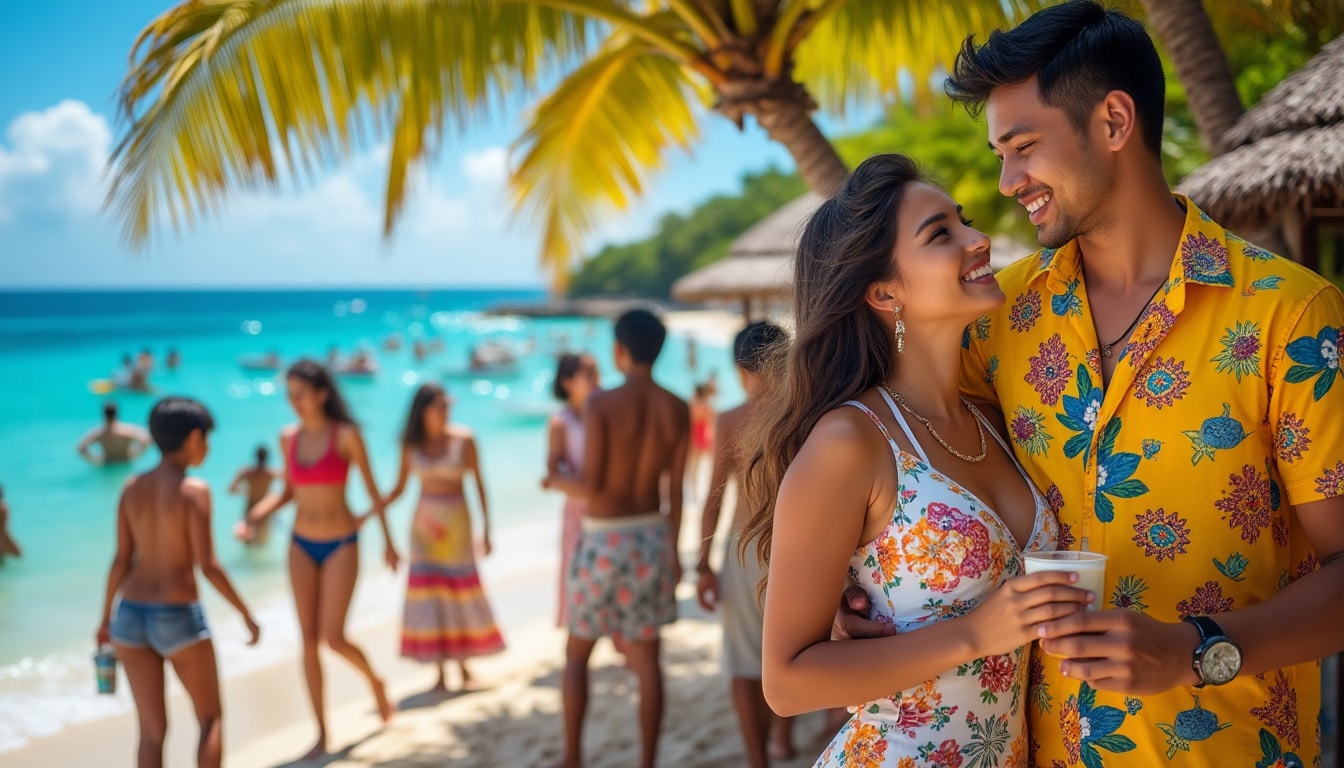Punta Cana, with its gorgeous beaches and vibrant atmosphere, attracts visitors from all around the globe. Beyond its breathtaking landscapes and luxurious resorts, language plays a crucial role in experiencing this Caribbean paradise. Understanding the language dynamics in Punta Cana can significantly enhance your travel experience, making interactions smoother and more enjoyable.
The Prevalence of Spanish in Punta Cana
Punta Cana is situated in the Dominican Republic, where Spanish is the official language. Whether you’re strolling down the bustling streets or dining at a local eatery, Spanish is the language you’ll hear most frequently. While the region caters extensively to tourists, the influence of Spanish culture is a cornerstone of everyday life in Punta Cana.
For those looking to delve deeper into the local culture, speaking a few basic phrases can be invaluable. Here’s a short list of useful Spanish expressions for travelers:
- 👋 Hola – Hello
- 🙏 Gracias – Thank you
- 📝 ¿Cómo se llama? – What is your name?
- ℹ️ ¿Habla inglés? – Do you speak English?
- 🆘 ¡Ayúdeme! – Help me!
For travelers eager to embrace the language, language learning apps like Duolingo, Babbel, and Pimsleur provide user-friendly platforms to practice and develop Spanish conversational skills. Additionally, platforms such as Rosetta Stone offer immersive experiences that can substantially improve language retention.

✔️ Being aware of the local customs and phrases doesn’t just enhance your communication; it can also open doors to deeper cultural experiences. Locals appreciate travelers who make the effort to communicate in Spanish, and it often leads to more genuine and fulfilling interactions.
For a visual insight into the everyday language scenes in Punta Cana, visit this insightful
.
English: The Lingua Franca of Tourist Areas
Despite Spanish being the primary language, English holds significant importance in Punta Cana, especially in tourist-heavy areas. The hospitality and tourism sectors are prepared to accommodate international visitors, many of whom communicate in English. Staff at hotels, resorts, and main attractions are often bilingual, making it easier for travelers who are not proficient in Spanish to navigate the region.
However, it’s important to recognize that English proficiency decreases as you move away from these tourist-centric zones. When visiting smaller towns or exploring less-traveled areas, you may encounter locals who have limited or no English knowledge. Here, the basic Spanish phrases you learn could prove crucial.
| Location | Primary Language | English Proficiency |
|---|---|---|
| Resorts & Hotels | Spanish | High 🟩 |
| Local Markets | Spanish | Medium 🟨 |
| Rural Areas | Spanish | Low 🟥 |
🌟 Travelers can take advantage of language learning platforms like Langster and Mango Languages to gain confidence in both English and Spanish. These tools provide valuable resources for vocabulary building and practical conversations.
While Spanish is essential for deeper explorations, English serves as a convenient bridge for initial groundings. To see how local tour guides juggle multiple languages, check out this engaging
.
Exploring Other Languages in Punta Cana
Punta Cana is a melting pot of cultures and languages, with many international visitors contributing to its vibrant and diverse atmosphere. Apart from Spanish and English, you might hear a medley of languages echoing through the area, especially in tourist hotspots where global travelers converge.
Languages such as French have a noticeable presence due to the proximity to Haiti, where French is widely spoken. Additionally, visitors from German, Italian, and Portuguese-speaking countries often travel to Punta Cana, bringing with them snippets of their native tongues.
For language enthusiasts and linguists, this linguistic diversity offers a unique opportunity to engage in casual multilingual exchanges. Participating in events at venues like Café Lingua provides an ideal setting to practice and expand your language skills. Busuu‘s community of global learners and iTalki‘s personal tutoring services can help individuals prepare for these multilingual interactions.
Here’s a quick overview of the other languages you may encounter during your stay:
- 🇫🇷 French – Common among Haitian communities and French-speaking tourists.
- 🇩🇪 German – Increasingly prevalent with the growth of German tourists.
- 🇮🇹 Italian – Frequently spoken among Italian visitors, especially during peak travel seasons.
- 🇵🇹 Portuguese – Occasionally heard from Brazilian and Portuguese tourists.
Getting acquainted with this linguistic diversity can be a delightful part of your travel journey. Whether you’re a seasoned polyglot or a curious traveler, the mélange of languages in Punta Cana enriches the cultural tapestry of this beautiful region.
Witness the rich language dynamic of the region in action through this engaging .
Communication Tips for Travelers in Punta Cana
Traveling to a place with varied languages can be both exciting and challenging. In Punta Cana, the linguistic landscape is vibrant, but it’s not without its hurdles. Here are some practical tips and tools to help you navigate potential language barriers during your journey:
- 📱 Utilize translation apps like Google Translate for real-time translations when conversing with locals.
- ⚡ Carry a pocket phrasebook for quick access to essential phrases in Spanish.
- 🖥️ Participate in online language exchange programs to practice conversational Spanish before your trip.
- 🔍 Consider hiring a local guide through services like iTalki for personalized tours with language assistance.
An organized approach to language preparation can greatly enhance your travel experience. The key is to balance reliance on technology with personal interaction. Engaging meaningfully with locals often leads to more memorable and authentic travel experiences.
| Tool | Type | Usefulness |
|---|---|---|
| Google Translate | App | High 🌟 |
| Pocket Phrasebook | Book | Moderate ⭐ |
| iTalki Guides | Service | High 🌟 |
Stepping outside one’s linguistic comfort zone in Punta Cana can lead to rewarding encounters with the locals. This can be particularly enriching if you are open to learning and embracing new languages or dialects.
For some visual tips on interacting with locals, visit this insightful .
Why Learning Basic Spanish is Highly Beneficial
While English and other languages have a presence in Punta Cana, learning even basic Spanish can greatly enrich a visitor’s experience. Not only does it facilitate smoother communication, but it also demonstrates a level of respect and appreciation towards the host community’s culture.
Travelers should consider the following reasons for picking up Spanish basics before their trip:
- 👩👩👦👦 Enhanced Social Interactions – Knowing Spanish allows for more genuine connections with locals and can lead to treasured friendships.
- 🍽️ Dining Experiences – Ordering in Spanish at local restaurants often leads to recommendations of authentic dishes that enhance your culinary journey.
- 🚗 Ease of Exploration – With Spanish, navigating public transport and reading signs becomes easier and more intuitive.
Many language learning platforms like Microsoft Translator, Mango Languages, and Busuu offer resources tailored specifically to travelers, focusing on phrases and vocabulary useful for navigating new environments.
An endeavor to explore the local language enriches your understanding of the cultural landscape. By engaging in even simple conversations, travelers can transform their journey into an immersive cultural experience, offering memories that last far beyond their visit to Punta Cana.
FAQ
- What is the official language in Punta Cana?
Spanish is the official language spoken by most of the population in Punta Cana.
- Do people speak English in Punta Cana?
English is widely spoken in tourist areas like hotels and resorts, but less so in rural areas.
- Are other languages spoken in Punta Cana?
Yes, languages such as French, German, and Italian are also present, especially among tourists.
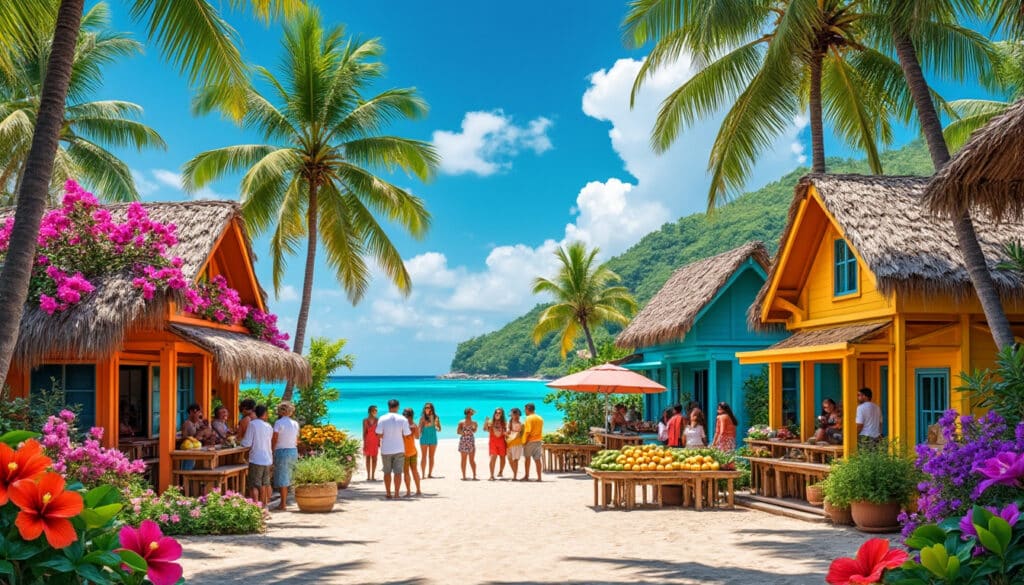
Culture & Local Life in Punta Cana
Punta Cana, the crown jewel of the Dominican Republic, shines not only with its shimmering beaches and azure waters but also as a vibrant epicenter of cultural richness and local life. This Caribbean paradise offers travelers a unique blend of…
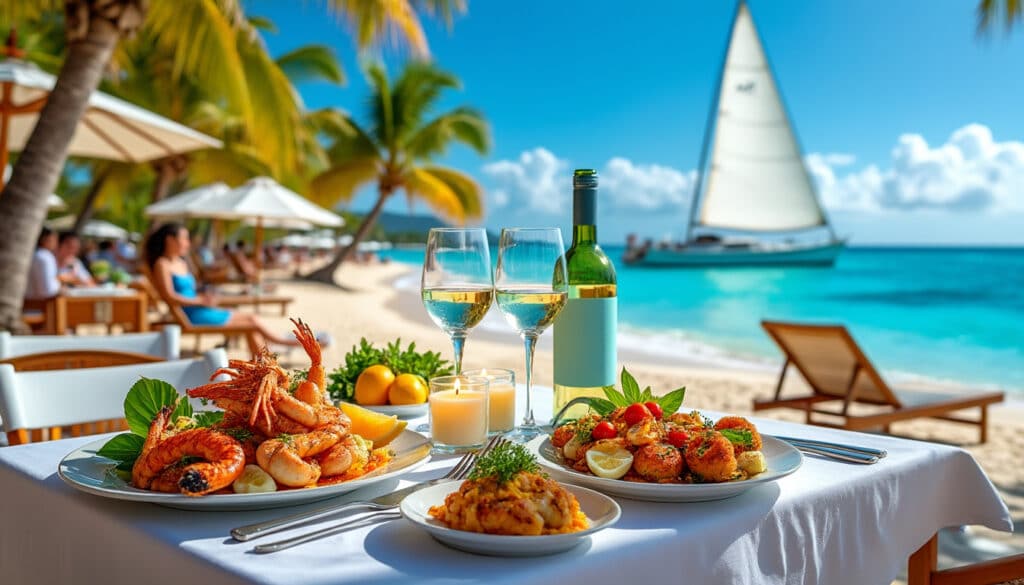
Best places to eat in Punta Cana
Nestled in the heart of the Caribbean, Punta Cana is not just a paradise for beach lovers but also a haven for food enthusiasts. Offering an eclectic mix of traditional Dominican dishes, seafood specialties, and international flavors, Punta Cana promises…
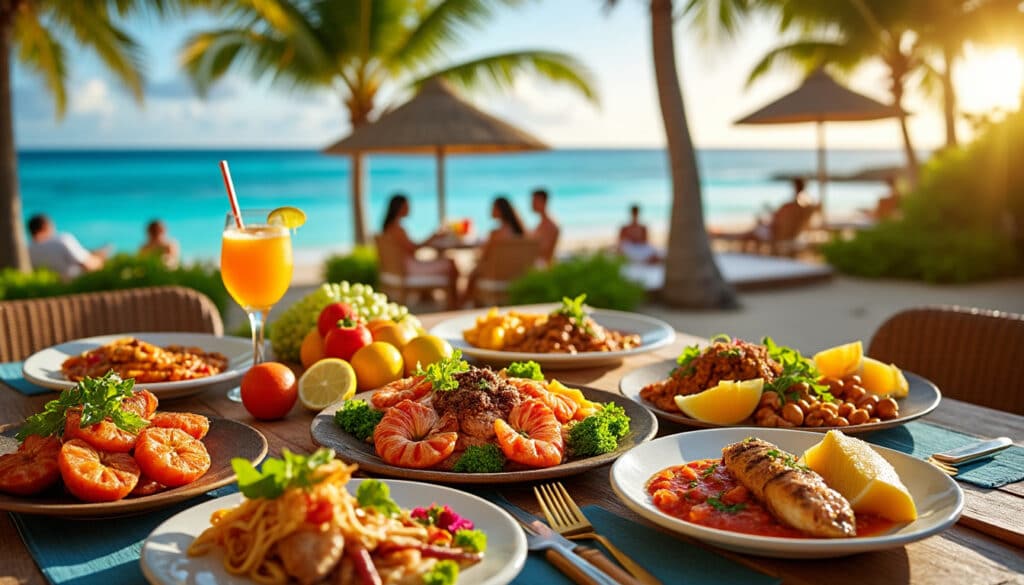
In the vibrant and sun-drenched paradise of Punta Cana, meal times are much more than just ticking the box of daily nourishment. 🌞 They are a window into the heart of Dominican culture, where every dish tells a story, and…
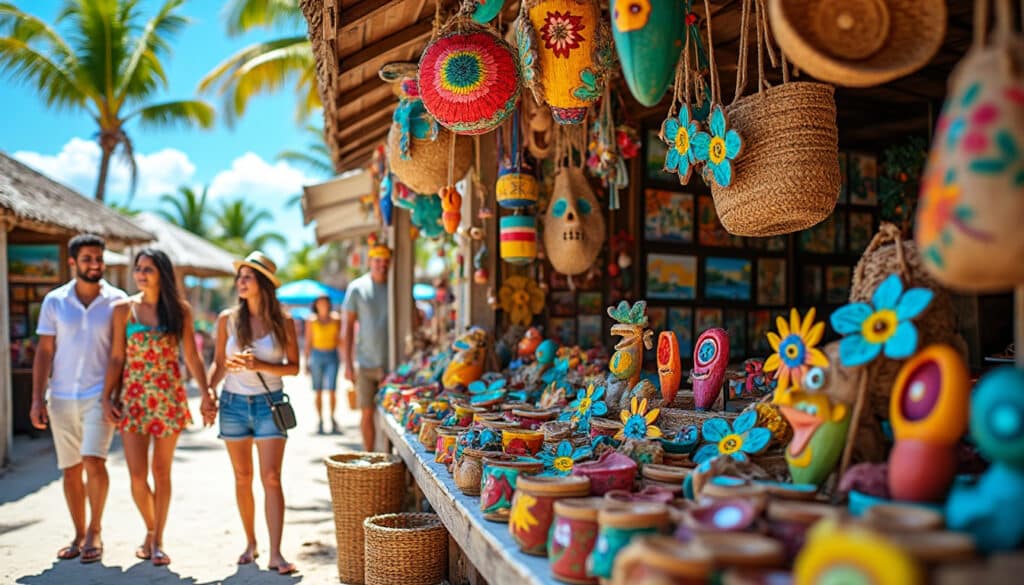
Souvenirs and shopping in Punta Cana
Discover the vibrant and colorful world of souvenirs and shopping in Punta Cana, a tropical paradise located on the eastern tip of the Dominican Republic. Famous for its white sandy beaches, year-round warm breezes, and turquoise waters, Punta Cana is…
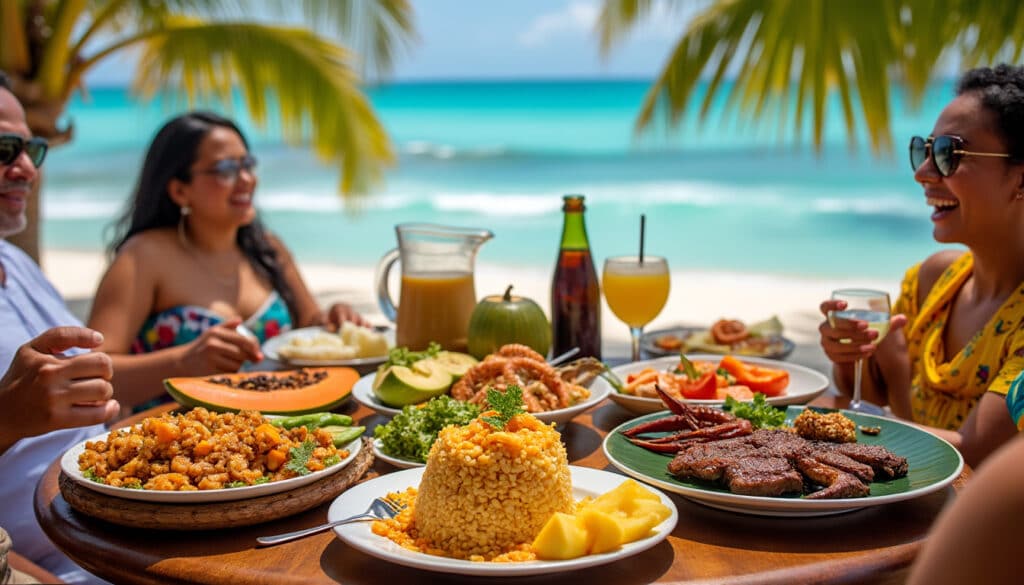
What do people eat in Punta Cana?
Exploring Punta Cana’s vibrant culinary scene is an adventure through a mosaic of flavors, steeped in rich history and cultural fusion. This Caribbean paradise is famed not just for its stunning beaches and warm hospitality but also for a cuisine…

